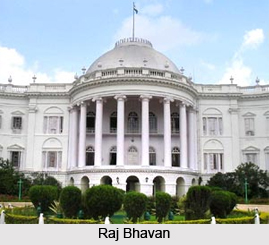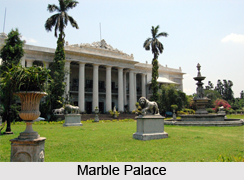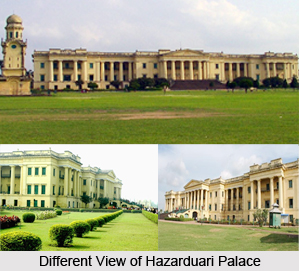 Monuments of West Bengal are renowned for their grandeur and excellence. The heart of West Bengal, Kolkata was founded by the British and has a history of around 400 years. There are very few old monuments in West Bengal of pre-British origin. However, the British constructed a handful of buildings for developmental purposes of the city. Some of these constructions were integrally associated with the Indian freedom struggle and thus gave them a monumental stature. Some of the prominent monuments among them are Howrah Bridge, Victoria Memorial, Raj Bhavan, Shahid Minar, BBD Bagh and Writers` Building and others.
Monuments of West Bengal are renowned for their grandeur and excellence. The heart of West Bengal, Kolkata was founded by the British and has a history of around 400 years. There are very few old monuments in West Bengal of pre-British origin. However, the British constructed a handful of buildings for developmental purposes of the city. Some of these constructions were integrally associated with the Indian freedom struggle and thus gave them a monumental stature. Some of the prominent monuments among them are Howrah Bridge, Victoria Memorial, Raj Bhavan, Shahid Minar, BBD Bagh and Writers` Building and others.
Howrah Bridge
Howrah Bridge is the symbol of modernisation in West Bengal. This monumental structure has always been under focus of famous photographers because of its majestic and opulent appearance. Howrah Bridge is considered as the gateway to the city of Kolkata. It is a 1500 ft single span suspension bridge over Hooghly River that was completed in 1943. Three bridges are built on the Hooghly River but Howrah Bridge is the busiest one. The traffic density on this bridge is the maximum in the world. The Bridge has been renamed as Rabindra Setu but the popular name, Howrah Bridge is still used by the citizens.
Victoria Memorial
Victoria Memorial is an excellently crafted legacy of the British reign, featuring a royal statue of Queen Victoria made in bronze. Moreover, there are also two brass canons protecting the statue and landscaped gardens with well-trimmed pathways. The pattern of this Memorial was designed by Lord Curzon and was inaugurated in 1921 by the Prince of Wales. The Memorial possesses marble statues; galleries stacked with memorabilia from the British era and elegantly crafted domes. The magical light and sound shows are conducted in the evening to entice the visitors. 
Raj Bhavan
Raj Bhavan was built in the 1800 and is a superb instance of Gothic architecture in West Bengal. The British Governor General of India used Raj Bhavan as his residence and office complex. Today, Raj Bhavan happens to be the office complex and residence of the Governor of West Bengal. The entry to the place is strictly restricted and public entry is generally prohibited.
Sahid Minar
Saheed Minar, the Monument of Martyrs, raises upto a height of almost 158 ft with an Egyptian style minaret and a surmounting dome on top. The monument commemorates British Army`s victory in the battle against Nepalese Army in 1814. Sahid Minar was originally named Octarloni Monument on the name of the British General David Octarloni, who was the leader of the battle. Associated with the Indian Freedom Struggle, Sahid Minar was the venue for frequent political seminars. After the Indian Independence, the Octarloni Monument was renamed as Shahid Minar, as a mark of respect for the freedom fighters and its association in the freedom struggle.
BBD Bagh
BBD Bagh, an abbreviation for Benoy-Badal-Dinesh Bag, is a small place located to the south of Rabindra Setu. The pond called the Lal Dighi in the middle of the garden was once the main source of water to the nearby areas. The place is now known as Dalhousie Square or Tank Square or Lal Dighi Square. The British immortalised BBD Bagh, by conducting the execution of three Indian freedom fighters, Benoy, Badal and Dinesh who went forth to protest the opposing party for the partition of Bengal. The name BBD was derived from the first letters of the three names of the martyrs.
Writer`s Building
Writer`s Building is build based on the European architecture. This red coloured building dates back to the 17th century and is well maintained as the office of the State Chief Minister. Writer`s Building was originally built to accommodate the clerical and administrative staff of the East India Company. However, the spectacular one storey building in BBD Bagh was later expanded to let in more staff. The Fort William College of Kolkata was initially located here. 
St Paul`s Cathedral
St Paul`s Cathedral is the Anglican Cathedral of Kolkata, built in 1847 and stands at a height of 65m, adjacent to the Birla Planetarium. The structure was constructed by Bishop Daniel Wilson in the year 1847. St Paul`s Cathedral is built in the Gothic Revival style that was much popular during the British rule. The main hall of the cathedral is huge, adorned with stained glass windows, 2 spectacular Florentine frescoes, detailed artworks and carved wooden pews and chairs. St Paul`s Cathedral is 201 ft in height, 81 ft wide and 247 ft long.
Marble Palace
Marble Palace in North Kolkata was constructed by Raja Rajendra Mullick in the year 1835. It is built in Neo-classical and traditional Bengali style and consists of several Victorian furniture and Western sculptures. Marble Palace is famous for its marble walls and floors, paintings, decorative items, antique collections, rare birds, floor to ceiling mirrors and marble statues.
National Library
National Library was initially called the Vice-Regal House. It is one of the largest libraries with the unique collections of vintage books and manuscripts in Asia. The library is located opposite to the Zoological Garden of Alipore. National Library is the biggest library of India and contains more than 2 million books and periodicals. Prior to Indian independence, the building used to be the residence of Lieutenant Governor of Bengal.
Kolkata High Court
Kolkata High Court is the highest seat of judiciary in West Bengal. It is one of the oldest in India that dates back to the year 1872. Kolkata High Court is exquisitely built in the Gothic style of architecture and is considered to be a landmark of Kolkata. An extension was added later that perfectly blends with its original architectural symmetry. Kolkata High Court is located near Eden Gardens.
Hazarduari Palace
 Hazarduari Palace of Murshidabad was the palace of the Nawab. The literal meaning of this monument is The Palace with Thousand Doors. Built during the 1830s, by General Duncan McLeod of the Bengal Engineers, the structure features a banquet hall lined with mirrors and a circular Durbar Hall. Hazarduari Palace comprises of 1000 doors, 114 rooms and 8 galleries. The monument is now transformed into a museum with fine exhibits, such as a gigantic chandelier, presented by Queen Victoria. The museum has a library that house more than 10, 000 books. Curzon Gate, also known as Vijay Toran is a majestic structure constructed by the king of Burdwan Maharaja Bijoy Chand Mahatab in 1903 in the honour of Lord Curzon.
Hazarduari Palace of Murshidabad was the palace of the Nawab. The literal meaning of this monument is The Palace with Thousand Doors. Built during the 1830s, by General Duncan McLeod of the Bengal Engineers, the structure features a banquet hall lined with mirrors and a circular Durbar Hall. Hazarduari Palace comprises of 1000 doors, 114 rooms and 8 galleries. The monument is now transformed into a museum with fine exhibits, such as a gigantic chandelier, presented by Queen Victoria. The museum has a library that house more than 10, 000 books. Curzon Gate, also known as Vijay Toran is a majestic structure constructed by the king of Burdwan Maharaja Bijoy Chand Mahatab in 1903 in the honour of Lord Curzon.
Tomb of Sher Afghan
Tomb of Sher Afghan is the last construction of the Afghan Jagirdars in Bardhaman. Thousands of tourists visit the site during festive occasions. Meghnad Saha Planetarium within the premises of University of Burdwan, is a planetarium built by the help of Japanese government. It is well equipped with latest technological instruments for public shows since 1994.
There are various other monuments in west Bengal, like Ramakrishna Math, which is a monastic organisation and also a monument established by Sri Ramakrishna Deb, the great 19th century saint of Bengal, who is regarded as the Prophet of the Modern era. Swami Prabhupada established the International Society for Krishna Consciousness (ISKCON) in 1966. ISKCON is a worldwide confederation of 10,000 temple devotees and 250,000 congregational devotees amidst the monument carrying out Hare Krishna movement. Himalayan Mountaineering institute, established in the year 1954, is a monument on the Birch Hill of Darjeeling. The institute trains mountaineers and has a small museum with fascinating Himalayan peaks all around.



















